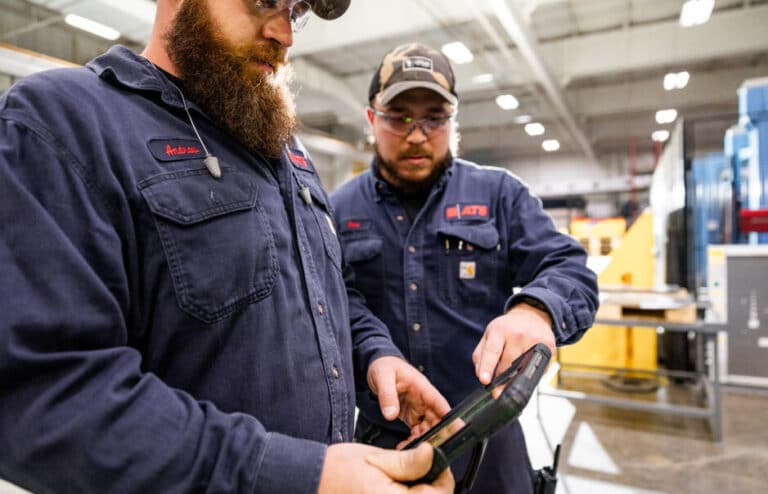Manufacturers typically operate in very competitive spaces. Continuous pressure comes with the territory — there’s an ongoing need to improve processes, boost efficiency, meet production deadlines and increase margins. Maintenance departments are not immune. In fact, the maintenance team, when structured and used correctly and provided with the right resources, is one of the most important cogs in a manufacturer’s wheel. If your maintenance department isn’t making a noticeable difference in your operations, then there’s room to do better. Improving the departmental structure might be a large part of the solution.
The role of the maintenance department
As manufacturing technology has advanced, the functions for which a maintenance team is responsible have grown. Being able to fix equipment that breaks down is still critical, of course, but the bigger picture demands that maintenance teams take the lead in eliminating downtime through technology-driven preventive maintenance. On top of that, they are tasked with doing so while maximizing efficiency, at intervals that do not disrupt production, in a cost-effective manner and while maintaining a safe environment for employees.
Examples include monitoring machine health using sensor technology that tracks indicators such as vibration and temperature to determine whether equipment performance is falling off or perhaps even on the verge of failure. Similarly, efficient data-based storeroom management can lead to a properly stocked and organized on-hand supply of the right parts, so equipment failures can be headed off or fixed more quickly — all while reducing inventory spend. Leveraging such efficiencies is one of the roles of the modern maintenance team.
Key members of the maintenance department
The personnel hierarchy in the maintenance department may differ from one manufacturing facility to another. One example is below, but positions and responsibilities may be combined depending on the business’s size and other factors:
- Maintenance or reliability director: The top-level departmental leader is typically responsible for establishing overarching goals and seeing that they’re carried out, in addition to budgeting matters.
- Maintenance manager: The manager’s duties often include developing maintenance strategies and overseeing spending to ensure that budgets are met, plus determining monthly workloads and managing maintenance-related inventories.
- Supervisors: With technicians as their direct reports, supervisors schedule daily work; recruit, train and supervise technicians; and conduct regular maintenance-related inspections of the manufacturing facility, among other duties.
- Technicians: Technicians do the hands-on work, from performing repairs to fulfilling preventive maintenance tasks.
Assessing your current maintenance department structure
In order to implement the optimal maintenance organization structure, you must determine what changes are needed, which requires knowing what your starting point is. Assessing your current structure entails gathering information about existing processes and operations. Determining the following can provide valuable insights:
- Is your maintenance operation proactive?
- Are you taking advantage of modern technology, such as machine health monitoring sensors?
- Are you utilizing a computerized maintenance management system (CMMS) or other software to help collect, store and track relevant data?
- Are your technicians properly trained?
- Does the department communicate effectively with other departments, especially production?
How to organize your maintenance department
Developing a new structure for your maintenance department requires a strategic roadmap. The objective, after all, is not a quick fix but to determine how to improve your maintenance department for sustainable success. Here are some key steps to take:
- Set goals: Both teams and individuals should be 100% clear on what their primary missions are. Manufacturing facilities’ maintenance goals and objectives should be specific and achievable, and how success will be measured should also be spelled out.
- Focus on hiring skilled talent: The burgeoning use of technology in maintenance makes it more important than ever to hire and train a workforce with relevant qualifications. You may still need technicians who are magicians with a wrench, but an effective preventive maintenance plan may also require skilled technical talent with the knowledge to analyze machine sensor data and master CMMS software and other technological assets.
- Implement standard procedures: Repetitive maintenance tasks typically should be performed the same way regardless of which technician is handling the work. The best way to ensure this is to determine the standard procedure and then document the process in company guidelines that are available to all technicians. This way, work will be performed up to company standards every time.
- Establish a reporting hierarchy: All maintenance team members should know to whom they have to answer. Accountability goes hand in hand with quality control.
- Track performance: Keeping records related to work performance as well as pre- and post-maintenance equipment performance can help manufacturers identify skills gaps and persistent problems. Maintenance team members should be aware of which metrics are used to track performance, as this will help with accountability.
- Utilize technology: The value of technology such as CMMS software cannot be overstated. Utilize technology to help create, assign and oversee work orders in real time and even to help with spare parts management. A CMMS with advanced reporting can benefit performance tracking as well.
Improving your maintenance department structure can help restore the balance that is needed to keep machinery well-maintained without impacting production. If you are facing technical workforce staffing challenges or looking to implement predictive technology for increased uptime, contact us to learn about our array of solutions.


